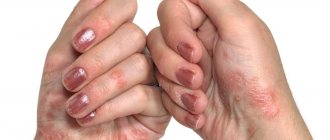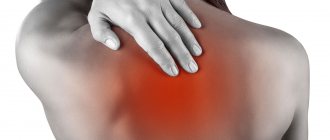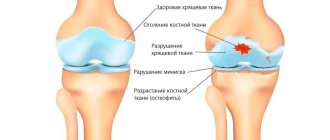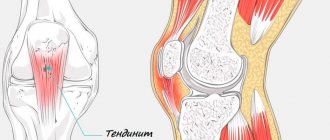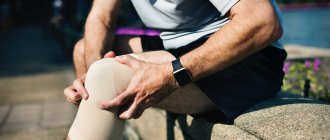Osteopenia is a bone condition characterized by decreased bone density, which leads to weakened bones and an increased risk of fracture. Osteopenia and osteoporosis are related conditions. The difference between osteopenia and osteoporosis is that with osteopenia, bone loss is not as severe as with osteoporosis. This means that individuals with osteopenia are more susceptible to bone fractures than people with normal bone density, but less so than those who have osteoporosis.
Osteomalacia and osteomyelitis osteoarthritis are often confused with osteopenia, since they sound somewhat similar. Osteomalacia is a disorder of the mineralization of newly formed bone, resulting in weakened bones and a susceptibility to fracture. There are many causes of osteomalacia, including vitamin D deficiency and low blood phosphate levels. Osteoarthritis is inflammatory changes in the joints caused by degenerative changes in cartilage tissue, which does not cause
osteopenia, osteoporosis or decreased bone mineral density.
Patients with osteopenia are not as susceptible to bone fractures as patients with osteoporosis, however, because there are many more people with osteopenia than with osteoporosis, given the large number of patients, the number of fractures can be significant.
Approximately 50% of Caucasian women experience bone fractures during their lifetime. Bone fractures due to osteopenia and osteoporosis are important because they can be very painful, although vertebral compression fractures may not be painful. In addition to pain, such as hip fractures, serious problems arise because these fractures require surgery, and almost 30% of patients with hip fractures require long-term nursing care.
Hip fractures, especially in the elderly, are associated with high mortality. Approximately 20% of people die within a year of a hip fracture due to complications such as thrombosis, congestive pneumonia and other complications caused by immobility of patients. For example, healthcare losses due to fractures associated with osteopenia and osteoporosis in the United States reach $15 billion. Due to the aging population, the number of hip fractures will increase.
Similar diseases
There are a huge number of diseases in the world with very similar names. Sometimes people confuse osteopenia and osteoporosis, and this is not surprising, because these two diseases are actually very similar. The difference is that osteoporosis leads to a greater decrease in bone density, and although it may seem that these are just different stages of the disease, it is still worth separating them from each other.
You can also add diseases such as osteoarthritis, osteomyelitis and osteomalacia to this list. All these diseases are united by a connection with bone tissue, which is clearly evident in the name itself, but the most important thing is hidden in the main characteristics of these diseases.
It is worth noting that the same osteomalacia is also somewhat similar to osteopenia, because as a result, the strength of the bones of the body is still reduced, resulting in a high probability of fractures. The difference is that in this case it is no longer a matter of decreasing bone density, but of mineralization of young bones. Therefore, osteomalacia most often manifests itself in children whose bodies continue to actively grow.
Features of osteopenia and statistics
Osteoporosis is more dangerous to your health because it has a greater impact on bone density and therefore increases the likelihood of a fracture. However, statistics show that there are many more people diagnosed with osteopenia than those who suffer from osteoporosis. That is why, purely statistically, the number of fractures from osteopenia is several times higher than the similar indicators of osteoporosis.
Research shows that about half of all Caucasian women will break a bone at least once during their lifetime. In the modern world, a simple fracture is not a very dangerous problem, because the level of medicine is high enough to properly treat it, and also recover from it.
But fractures associated with osteopenia or osteoporosis occupy a special place in these statistics, because they are almost always more painful and require a more difficult recovery period.
Why are statistics for women shown? It's quite simple - osteopenia occurs equally in both women and men, but taking into account physical characteristics and modern lifestyle, women with similar diseases are more prone to fractures, and the weaker muscular skeleton is to blame.
Fractures of large bones are especially difficult to bear, as they not only take a long time to heal, but also greatly hinder a person’s actions at this time. One of these fractures is damage to the femoral neck, which peaks in the winter season, when there are a lot of slippery places outside. In addition to physical discomfort, there is a more serious side - problems within the body. Such a fracture often causes thrombosis or even varying degrees of pneumonia.
Provoking factors
According to research results, the incidence of osteopenia in the bones that form the hip joint has a clear relationship with age and gender. Most often, this condition is found in women - for every five patients with osteopenia, there is only one representative of the stronger sex. There is also a clear dependence on age - usually osteopenic damage to the hip joint is diagnosed in older and elderly people, but there are exceptions. It is advisable to identify the causes that provoked the development of this disease, since the treatment and prognosis for each individual patient will depend on this.
In order for osteopenia to develop in the human body, a combination of several provoking factors is necessary, including the following:
- hereditary predisposition;
- long-term therapy with drugs from the group of corticosteroids or other drugs (tetracyclines, anticonvulsants, cytostatics, etc.);
- abuse of coffee and/or improper diet;
- imbalance of general hormonal levels (diseases of the thyroid and parathyroid glands);
- long bed rest;
- imbalance of sex hormones (menstrual irregularities, menopause);
- nicotine addiction and/or frequent alcohol consumption;
- chronic inflammatory diseases;
- certain types of radiation therapy.
Causes of osteopenia
Since osteopenia is a rather serious problem, many are interested in how it can be circumvented and why this disease occurs in the first place. Unlike many similar diseases, osteopenia is not a congenital disease. During the course of our life, approximately in the first 20-25 years, our body does not stop growing and developing quite actively. After this time, in particular, with the onset of the middle stage of our life, the processes slow down greatly, and then completely reverse.
Children experience fractures more easily than adults. The thing is that from the moment of birth until the end of adolescence, our bones actively grow, and therefore bone tissue is quite productively restored in case of fractures. That is why similar fractures in a 12-year-old teenager and a 35-year-old person under the same conditions will recover with a noticeable difference.
After 30, we already experience gradual destruction of bone tissue, which is quite normal and natural. It is at this time that osteopenia usually manifests itself, and the reasons can be different. The main reason for increased bone fragility is the lack of various elements, such as minerals or calcium.
At the same time, you should not exclude the factor of genetic predisposition, because if your parents and their parents suffered from osteopenia or osteoporosis, there is a high probability that these diseases will manifest themselves in you. At the same time, it is worth understanding that even with a genetic predisposition, the disease may not manifest itself, and this largely depends on you. Bad habits such as drinking alcohol, smoking, and a sedentary lifestyle can lead to osteopenia.
Other reasons:
- However, there are also more complex reasons, such as severe hormonal imbalance, and we are talking about testosterone and estrogen.
- Here you can add a simple lack of calcium, which we already talked about earlier, and this already applies to our nutrition, diet, which should be thought through more carefully.
- It is also worth considering race - representatives of the European race are more prone to osteopenia than any other people around the world.
- It’s also worth adding the overall physique, namely the general size and condition of the body’s muscles - thinner people with poorly developed muscles are at risk.
- The last of the most common causes is the treatment of malignant tumors - chemotherapy. Here, as you might have guessed, everything is quite simple. After all, this kind of treatment harms not only the formation inside the body, but also the whole body, which often leads to a decrease in bone density.
How to treat osteopenia?
Osteopenia is treated by taking steps to maintain and prevent bone loss.
Changing your lifestyle can help with this. What you eat is very important for bone development. Calcium is the most important mineral for bone mass. The best sources of calcium are milk and other dairy products, green vegetables, and calcium-fortified foods.
Taking extra vitamin D3 will help your body better absorb calcium and other minerals. Vitamin D3 is found in eggs, salmon, sardines, and fish oil. In addition to what you get from food, the body produces vitamin D3 in response to sunlight.
Physical exercise is very important to strengthen bones. Walking, hiking, and dancing are good choices. Training with light weights or expanders can help strengthen the bones in your upper body.
Vitamin K2 is also very important for proper calcium metabolism. This vitamin activates the process of building bone tissue, preventing the loss of bone mineral density. Moreover, with active consumption of calcium, vitamin K2 will prevent the deposition of this mineral in places it is not supposed to: soft tissues, blood vessels, joints.
According to research, regular intake of vitamins D3 and K2 significantly increases bone mineral density, improves the condition of skin, hair, nails and reduces the risk of vertebral and non-vertebral fractures by up to 87%. learn more
In addition to diet and exercise, you should stop smoking and avoid excessive consumption of alcohol and sugary sodas. This will also reduce the risk of bone loss.
There are medications to treat thinning bones. But, usually, they are resorted to only when osteopenia has reached serious proportions and can be diagnosed as osteoporosis. These can be hormones, biophosphonates and other drugs.
Symptoms of osteopenia
Osteopenia is quite difficult to detect on your own, if not impossible. Physically, with osteopenia, you will not experience any problems or discomfort, but this will only happen until the first fracture.
As we noted earlier, with osteopenia, fractures not only become more common, but are also accompanied by particularly severe pain, not only during injury, but also during treatment.
Most often, osteoporosis and osteopenia accompany a person for at least several years before they are discovered by doctors. What complicates the situation a little is that with these diseases, spinal injuries do not have any special symptoms, such as severe pain.
Despite all this, when osteopenia or osteoporosis is detected, the procedure is always approximately the same - a strong adjustment in lifestyle and diet, to which drug treatment is sometimes added. It largely depends on age.
Diagnosis of osteopenia
Medicine is now at a very high level, and therefore most of all diseases can be found in the early stages. Only this requires regular checks, sometimes with special equipment.
Since all the main changes in osteopenia take place inside the body, without special equipment, through simple tests, it is almost impossible to detect the disease at an early stage.
For this purpose, densitometry is now used - an analysis of bone density, which is carried out using x-rays. This procedure involves measuring bone density not in one place, but in several at once:
- spine;
- hip;
- wrist
This is done to make the measurements more reliable, because taking just one measurement can lead to an unusual area of the bone.
However, there is one more condition when measuring bone density - the analysis should be taken exactly in those places where fractures most often occur. If you do not have such experience, doctors will be guided by general statistics, but if fractures are a well-known problem for you, then the places where measurements are taken will be individual.
At an early age, densitometry is performed quite rarely, and usually only with frequent fractures. Most often, until the age of 50, people do not even know about this procedure, because it is from this age that problems usually arise.
The normal age for the examination is 55 years for women and 70 years for men. But here it is worth making an allowance for the fact that these marks apply to relatively healthy people. If a person is initially included in the risk group for detecting the disease, for example, due to a hereditary trait, then the initial mark is reduced to 50 years.
Manifestations of osteopenia
Manifestations of osteopenia of the femurs are quite scarce, as mentioned earlier. However, sometimes patients simply do not pay attention in time to the first signs indicating damage to the hip joint by this disease. The onset of the disease can be signaled by the periodic occurrence of tingling in the arms and legs, which the vast majority of not only ordinary people, but even doctors attribute to osteochondrosis and similar pathologies.
The further development of the disease gradually loosens the structure of the bones, which is accompanied by the formation of microcracks in them even in the absence of any excessive loads. When bone density reaches a critical value, a person’s risk of getting a serious fracture increases several times by simply tripping on the carpet at home.
It is worth mentioning separately that being overweight seriously accelerates the process of “washing out” calcium from the bone structures of the hip joint. In addition, this factor increases the likelihood of developing bone fractures even at an early stage of osteopenia. Obese patients who have reached the age of forty are advised to regularly check for calcium deficiency in the body in order to avoid the development of osteoporosis and begin treatment on time.
Treatment of osteopenia
Osteopenia is in some ways similar to diabetes. From the moment it is discovered, life will no longer be the same, and the disease should not be ignored. First of all, this affects your lifestyle, and the first thing you need to do is change your diet.
If you have osteopenia, your diet should increase the amount of vitamin D and calcium, the lack of which often leads to earlier onset of the disease. The early stages of osteopenia do not require additional drug treatment, as is the case with diabetes. It is only in later stages, when the disease becomes much more severe, that you may need drugs that will actively increase your bone density.
In fact, treatment in this case comes down to activating processes that the body itself can no longer do. This is exactly like the insulin dependence of severe diabetics, only in this case there is no direct threat to life.
At the same time, you should understand that drugs that increase bone density are quite strong, and therefore often have side effects, not to mention collateral damage to the body. It is strictly forbidden to take such medications on your own, because as a result of self-medication you may not only not improve your condition, but also lead to more serious complications.
In addition to drug treatment, it is advisable for patients to begin leading a more active lifestyle. Depending on the age at which osteopenia is detected, activity may vary between vigorous sports and simple regular walks.
What is osteopenia?
Osteopenia is low bone density or low bone mass, a condition in which a person experiences a decrease in their bone structure that is greater than normal for their age. Osteopenia, if left unchecked, leads to osteoporosis, a serious disease in which bone density deteriorates to the point that it increases the risk of broken bones or fractures. Osteopenia is more common than osteoporosis, affecting millions of young and middle-aged people, especially women. Causes and symptoms of osteopenia
It is difficult to identify osteopenia and osteoporosis because there are usually no noticeable symptoms. Often medical diagnosis fails to detect osteopenia, and women are advised to have a bone density scan when they reach menopause, which usually occurs with menstrual irregularities or between the ages of 45 and 55.
The causes and factors leading to osteopenia may be:
• Heredity. If one of your family members has osteoporosis, then the risk increases; • small height and weight; • female. Women suffer from osteopenia and osteoporosis more often than men; • smoking and drinking alcohol; • low intake of calcium-rich foods such as dairy products; • excessive consumption of meat; • low stomach acidity, which inhibits calcium absorption; • consumption of large doses of caffeine (3 or more cups of coffee or strong tea per day); • lack of physical activity, sedentary lifestyle; • early menopause usually before 45 years of age; • removal of ovaries; • absence of the menstrual cycle during reproductive age for more than six months; • medications such as steroids.
It is natural that we lose bone density as we age. Bone loss in women begins around age 35, in line with the gradual decline in female sex hormones, but accelerates after menopause, when osteopenia is a common problem. Rapid bone loss in men typically occurs ten years later than in women unless they are at high risk.
Calcium for osteopenia
Our bones will lose a significant amount of density before we experience any symptoms of osteopenia that are not noticeable. Only after the pathology has worsened and turned into osteoporosis do the symptoms become easily identifiable, but by this time, it is too late to take action to prevent bone loss, with the exception of certain medications. Calcium and vitamin D have always been a mainstay in the treatment of osteopenia and osteoporosis, often prescribed along with bisphosphonates, a group of drugs that can have some side effects. Over the past decade, many people have questioned the use of calcium because it was believed that calcium is deposited on some of our organs, causing calcification of those organs. In addition, calcium is thought to increase the risk of cardiovascular disease. To date, calcium supplements have not been shown to increase the risk of cardiovascular disease.
Calcium is the most important mineral for bone mass, but it is not the only one. Besides him:
• Silica is a mineral that gives strength to bones; • Vitamin K2, it enhances the production of osteocalcin by cells of the bone structure; • Vitamin D helps the absorption of calcium from the intestines into the bloodstream.
To prevent the development of the disease, you need to not just focus on calcium for bones, but also other elements. A balanced supplement can benefit much more than just calcium in preventing osteopenia and osteoporosis. One of the best calcium supplements for bone repair with vitamin K2, it provides bones with all the nutrients they need to build healthy, strong bones. It is good if the supplement contains: • Dicalcium malate is a specific form of calcium, it reduces bone loss much more than other forms of calcium, such as calcium citrate and calcium carbonate. • Magnesium - plays a role in regulating calcium transport in the body. • Silicon or silica from horsetail increases the level of type I collagen found in the bone matrix and also induces enzymes in bone building cells. • Vitamin D3 - helps improve calcium absorption in the intestines. This is vitamin D3, not vitamin D2, which is often added to dairy products, which the body requires to build strong bones. • Vitamin K2 - ensures that calcium gets into the bones where it is needed and is not deposited on other parts of the body such as the heart. Do not take this supplement if you are taking anticoagulants. • Boron – may mimic the effect of estrogen, which protects our bones. • Manganese and zinc support nutrients that have been shown to support bone health when combined with calcium. Although a certain amount of bone loss is inevitable with age, osteopenia and osteoporosis can be prevented regardless of genetics. This can be achieved through proper nutrition and lifestyle.
Note! The content is not intended to replace conventional medical treatment. Any suggestions and all herbs listed are not intended for self-medication. The use of any product must be approved by a qualified physician.
Prevention of osteopenia
As with diabetes and many other diseases, the best way to prevent osteopenia is to live a healthy lifestyle. The most important thing is that this applies to all areas of life - nutrition, leisure, work, rest.
As you already know, bad habits, such as smoking or drinking alcohol, cause serious harm, and they contribute to the development of many diseases. An active lifestyle is especially important for people with sedentary jobs, in which the body is not very stressed for most of the day. Simple sports will help strengthen the body and make the muscle corset stronger, which in combination with the right

